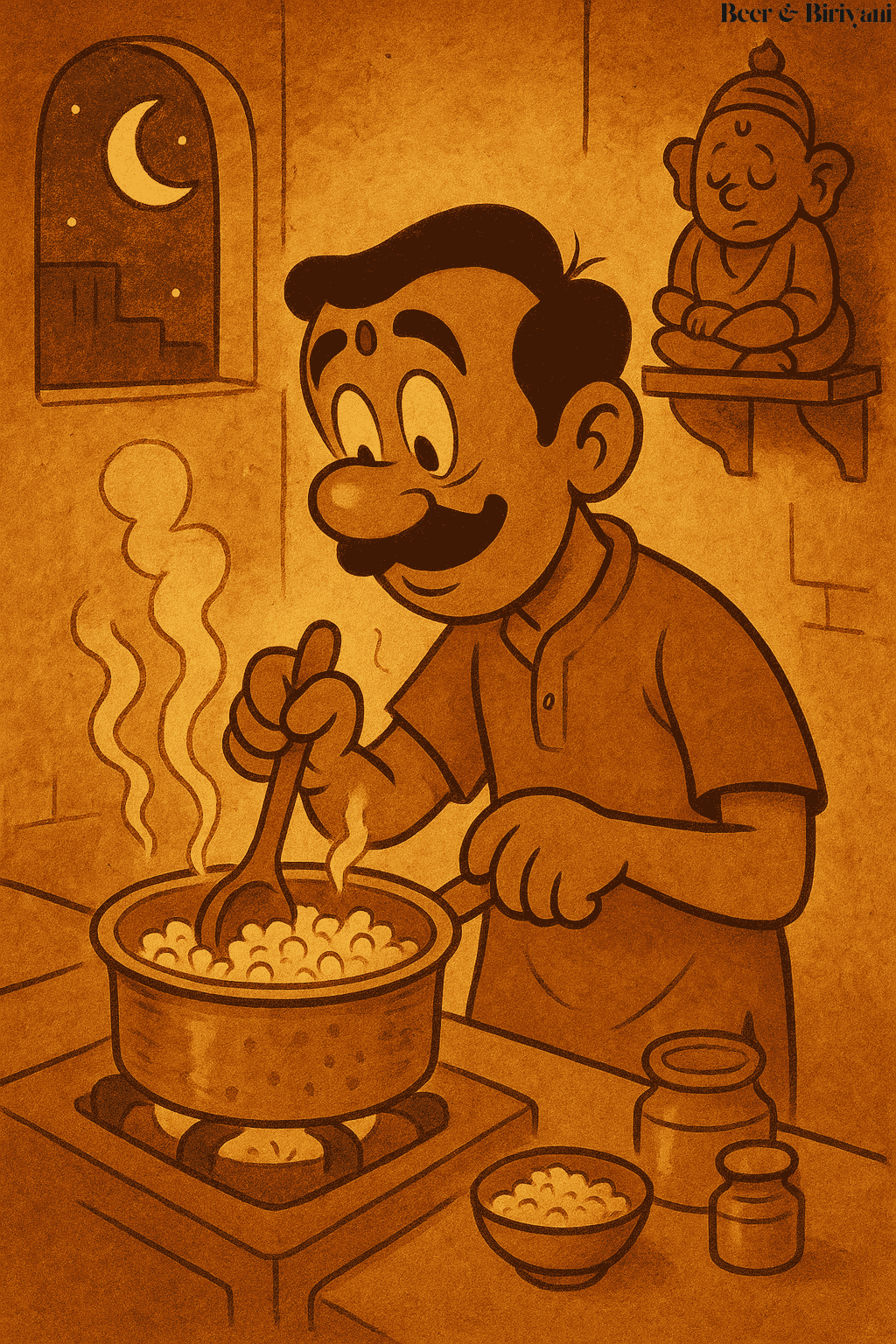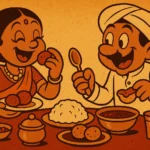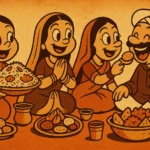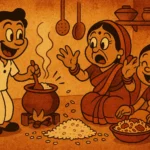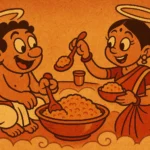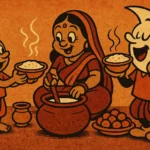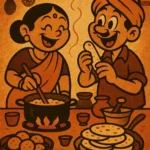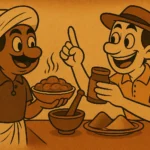As a child, the word “fasting” sounded suspiciously like punishment. Austerity cloaked in piety. Especially when my grandmother, on random Tuesdays, would announce, “Aaj vrat hai”—and then somehow spend more hours than usual in the kitchen. I was puzzled. If no one’s eating, why all the cooking?
It turns out, fasting in India doesn’t mean skipping food. It means reinventing it. Reworking it within sacred rules, religious boundaries, and personal quirks, often with ingredients that exist entirely outside the pantry the rest of the week. It’s like cooking on hard mode—with divine judgment watching.
Sabudana and the Cult of Starch
The undisputed queen of vrat ka khana is sabudana khichdi. Little white pearls of tapioca soaked till translucent, sautéed with peanuts, boiled potatoes, green chilies, and cumin. If made well, it’s fluffy, nutty, gently spicy, and addictive. If made badly, it’s a glue trap. There is no middle ground.
Sabudana, derived from cassava root, has long been a popular fasting staple because it’s gluten-free, filling, and doesn’t count as grain in the traditional Vedic system. But growing up, I always thought it was a bit of a cheat. Fasting, I was told, was about restraint. But this khichdi was loaded with ghee, crunchy peanuts, and enough carbs to power a pilgrimage. If this was austerity, I was in.
The Curious Case of Sendha Namak
No vrat meal is complete without sendha namak—rock salt. This is the salt approved by the gods. Why table salt is deemed too impure for fasting is still a bit of a mystery, but the practice has ancient roots. Rock salt is naturally occurring, unrefined, and rich in minerals. Also, it has a slightly different flavor—earthier, less sharp. The moment it hits hot ghee in your aloo jeera, it smells like someone opened a door to temple prasad memories.
Our family used to keep a special jar of sendha namak that only appeared during Navratri, Ekadashi, or my aunt’s dramatic once-a-month moon-day fast. It had a tiny spoon taped to the lid, as if to say: this salt is sacred, measure accordingly.
Fasting Foods Are Highly Engineered
What always amazes me is how ingeniously these meals are built. You can’t use onions or garlic. Wheat and rice are often off-limits. No legumes, no grains, no spice mixes. And yet, entire menus spring up around it—kuttu ki puri (buckwheat flour fried breads), rajgira sheera (amaranth halwa), lauki sabzi, makhana kheer, farali dosa. Each dish is a quiet rebellion against limitation. Each one whispers, “You thought this would be bland?”
I remember once asking my mother why she fasted if she was going to eat so much. She looked at me with the calm of a spiritual ninja and said, “The body is not hungry. The mind is.” I nodded. Then stole her sabudana vada.
The Spirit of It All
But vrat food isn’t just culinary gymnastics. It’s rooted in rhythm—aligning with lunar cycles, harvesting seasons, and devotional calendars. Fasting days often coincide with celestial events or spiritual observances, where food is offered first to the divine, then consumed with intention. You’re not just eating differently; you’re eating deliberately.
There’s a stillness to it. A mindfulness. You soak the sabudana the night before. You peel the potatoes with more attention than usual. Even the act of measuring sendha namak becomes meditative. And because the ingredients are limited, your focus sharpens. You learn to taste more from less.
A Fast for Every Mood
India has a fast for everyone. Want to get married? Fast on Mondays for Shiva. Want good grades? Try nine days of Navratri. Digestive issues? Ekadashi. It’s like a cosmic menu of intentions. But underneath it all, there’s a shared thread: food as ritual. Hunger as offering. Simplicity as devotion.
Even those who don’t fast strictly—like myself—find comfort in the ritual dishes. I still make sabudana khichdi sometimes on Sundays, not out of piety, but nostalgia. And maybe a little faith. Not the religious kind, necessarily, but the kind that trusts in the process of soaking, simmering, and serving with care.
What Fasting Teaches
In a world that glorifies abundance, vrat food is about restraint. But not denial. It’s about remembering that flavor doesn’t always need garlic. That salt has hierarchy. That potatoes are sacred when you treat them right. It teaches patience, reverence, and maybe even a little humility. Because when the pantry is half-closed, the imagination opens wider.
And when you finally break the fast—with a simple bowl of rajgira laddoo or a hot glass of sweetened chaas—it tastes like more than food. It tastes like pause. Like presence. Like something ancient and intimate you never realized you missed.
Born in Mumbai, now stir-frying feelings in Texas. Writes about food, memory, and the messy magic in between — mostly to stay hungry, sometimes just to stay sane.

